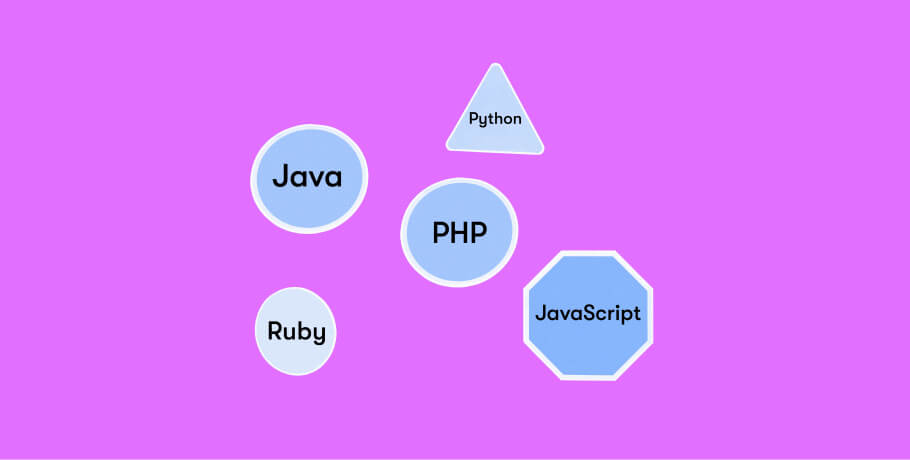Do you have a PHP interview ahead? If so, you should read these senior PHP developer interview questions for success.
Due to its ability to produce significant results with little code, PHP is ranked among the top programming languages. Throughout the last few years, the industry has demanded this level of efficiency. Now that people and companies know this, businesses worldwide spend a sizable sum on hiring skilled PHP developers who can fill these roles and perform well.
Knowing the questions an interviewer might ask about your profession, such as for senior software developer or backend developer roles, is important.
Here are some senior PHP interview questions you should know before heading into an interview:
tired of job hunting?
Scroll no more. Send us your CV and we'll match it with our best job for you.
1. How do you enable error reporting in PHP?
PHP allows us to choose whether or not to display errors to users. There are three ways to enable or disable error reporting in PHP:
Method 1: You can turn the display error parameter in the php.ini file on or off. When it’s on, errors are shown; when it’s off, there are no errors shown or reported. To do this, locate the display error parameter in the php.ini file, then set its value to “on.” Restart the web server's various services. The PHP script's errors will now be visible to end users. Set the display error parameter to “off” to stop reporting errors. The off argument indicates that users won't see any errors.
Method 2: Using the mini set() function is the second way to enable or stop error reporting. The ability to modify the configuration options in the php.ini file is a built-in feature of the PHP programming language. It requires two inputs: the name of the setting you want to change and the value you want to assign.
Method 3: You can also utilize the error reporting() function, a native PHP function, to enable error reporting. This function controls which PHP faults are reported and sets the error reporting directive during runtime. Given that PHP has multiple error levels, this method also aids in setting the various levels for the runtime (duration) of your script. This function accepts parameters for error names like E ERROR, E WARNING, E PARSE, etc., allowing these errors to be reported.
2. Define a PHP data object
With the help of the PHP Data Object/Objects extension, the computer language's databases can be accessed using the most lightweight, consistent interface possible. Any database driver implementing the PHP Data Object's interface can expose database-specific capabilities like the ordinary extension function(s). With the PHP Data Object function, any database function can be carried out.
3. How do you keep your PHP and web development knowledge updated?
The interviewer can better understand your commitment to professional development using this important PHP interview question for senior developers. Describe how you keep abreast of market changes and advancements, such as new PHP iterations and web frameworks.
As a senior PHP engineer, it's crucial to stay current with changes to web development and PHP language tools. You can stay current on top of industry news by reading trade publications, attending conferences, and engaging in online discussion groups. This enables you to keep up with new trends and advancements in web development.
4. When is it better to use the OOP approach over functional programming?
Show off your understanding of OOP and how it applies to coding by answering this major sr php developer interview question. You can respond to this query by citing the advantages of OOP, such as its capacity to produce reusable code and enhance performance.
A sample answer might be something like the following:
"Object-oriented programming (OOP) is a wonderful coding strategy when writing complicated applications or systems. OOP enables the development of objects that may be extended, updated, and reused across the codebase. This makes scaling and maintaining the application simpler as needed. I've worked extensively with OOP principles and have used them on numerous projects.”
5. What’s the difference between abstract class and interface?
The key difference between classes and interfaces is that a class can implement multiple interfaces, but it can only inherit from a single class. This concept is known as multiple inheritance through interfaces and enables greater flexibility and reusability in code, with traits beings one of the possible solutions to the multiple inheritance problem.
On the other hand, inheritance allows a class to inherit the properties and methods of a parent class, promoting code reuse and organizing the code structure.
6. What is a persistence cookie?
A persistence cookie is a file saved on a user's computer that remembers details such as settings, preferences, or sign-in information the user previously saved. Because of this, using the website is quicker and more practical. Web servers establish these cookies' expiration dates.
7. How would you find duplicate email records in the users' table?
The inner query is run in an associated subquery for each record in the outer query. By using a correlated subquery and the EXISTS clause in SQL, one email is compared to the other emails in the same table, as seen below:
8. How is the explode() function used?
A built-in PHP method called explode() can break a string into many strings. The explode() function divides a string whenever the delimiter appears. The output of this function is an array with the strings created by slicing the actual string.
9. How does the array_walk function work in PHP?
The array walk() function executes a user-defined function on each array element. The function's parameters are the array's keys and values.
It should be noted that the user-defined function's first parameter, &$value, can be used to modify the value of an array element.
10. How are the $_get and $_post variables used in PHP?
The browser client can communicate with the web server in two different ways.
1. The GET method
The user data is encoded and added to the page request before being sent via the GET method. The ? character places a space between the page and the encoded data.
2. The POST method
Via HTTP headers, the POST method transmits data. The data is encoded by the GET method's instructions and placed in a QUERY STRING header.
11. When would you use === instead of ==?
The === operator will check for a specific type, such as an integer or boolean, exactly as one would anticipate from a strongly typed language. This is in contrast to the == operator, which will temporarily transform the data and attempt to match the types of both operands.
The absence of type conversion also improves the performance of the identity operator (===). Avoid using == for determining whether a variable is true or false, as this would also consider 0/1 or other comparable representations.
12. How does inheritance work in PHP?
When a class derives from another class in OOP, this is called inheritance.
The child class will inherit all of the parent class's methods, both protected and public, and it can also have its methods and characteristics.
Using the extends keyword defines an inherited class.
Let's consider a situation:
13. What is MVC and what does each component do?
The Model-View-Controller (MVC) architecture breaks up an application into three major logical components: the view, the model, and the controller. Each component handles certain application development characteristics. It is a widely popular and accepted framework for building flexible and scalable web development projects.
The elements of the MVC are as follows:
1. Model
All of the user's data-related logic is represented by the Model component. This could be any other data pertaining to business logic or data that the View and Controller components exchange with each other. A Customer object may obtain customer information from a database, edit it, and then update it back into the database or utilize it to render data.
2. View
The View component implements the application's UI functionality. For instance, the Customer view will have every UI element the end user interacts with, such as dropdown menus, text boxes, etc.
3. Controller
Controllers link the Model and View components, handling all incoming requests and business logic, manipulating data through the Model component, and interacting with the Views to provide the desired result. By way of illustration, the Customer controller will manage all inputs and interactions from the Customer's View and update the database with the help of the Customer Model. Data about the customer will be seen using the same controller.
Join EPAM Anywhere as a remote PHP developer
Want to work with a career-oriented tech company? We are inviting you to apply today for remote PHP developer jobs. The questions mentioned above will help you get through your PHP developer interview.

As Chief Editor, Darya works with our top technical and career experts at EPAM Anywhere to share their insights with our global audience. With 12+ years in digital communications, she’s happy to help job seekers make the best of remote work opportunities and build a fulfilling career in tech.
As Chief Editor, Darya works with our top technical and career experts at EPAM Anywhere to share their insights with our global audience. With 12+ years in digital communications, she’s happy to help job seekers make the best of remote work opportunities and build a fulfilling career in tech.
Explore our Editorial Policy to learn more about our standards for content creation.
read more
























